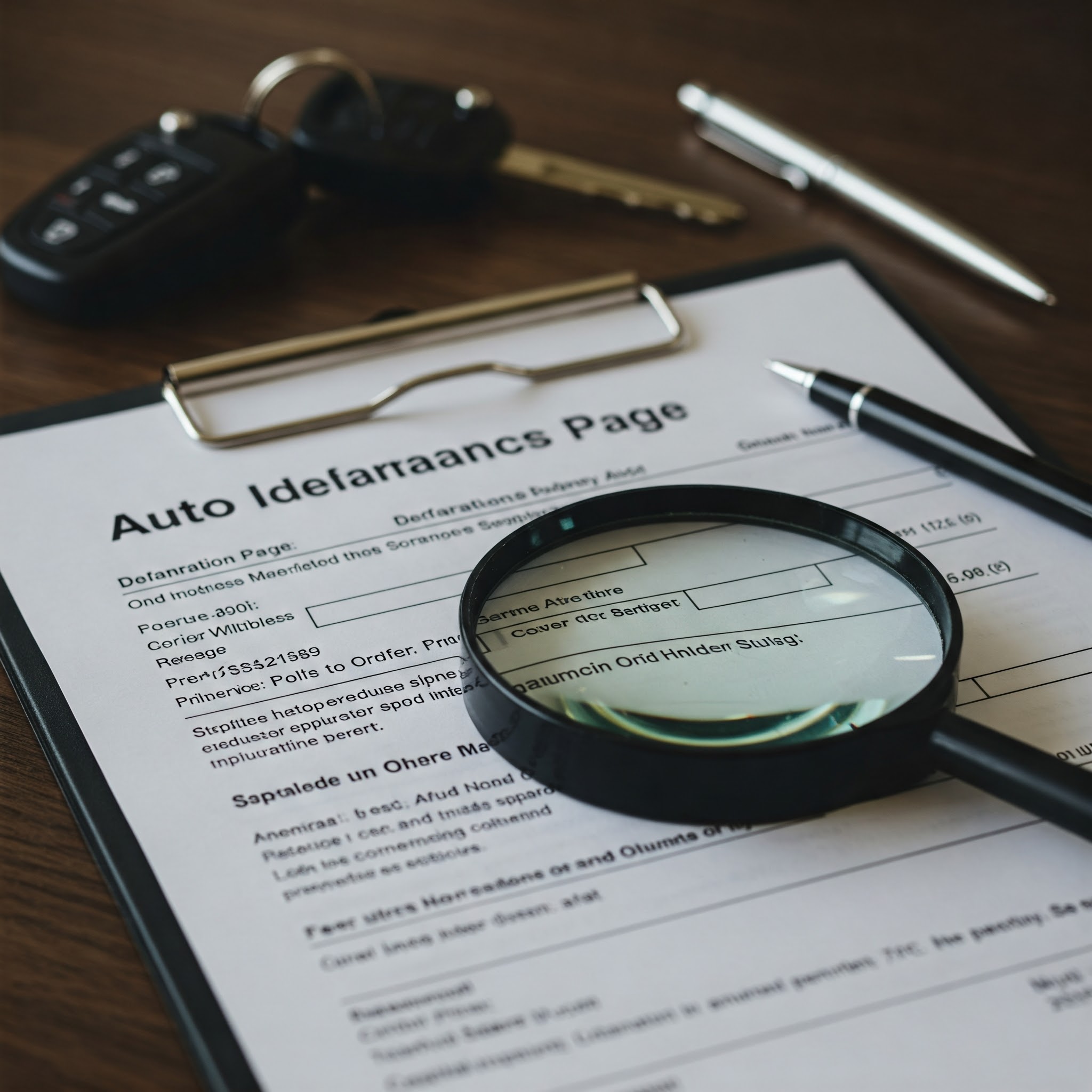Introduction
Have you ever received your auto insurance policy and felt overwhelmed by the details? You’re not alone! Many people glance at their insurance documents and tuck them away without truly understanding what they mean. But did you know that your declarations page is one of the most important documents in your policy?
This page serves as a summary of your coverage, helping you know exactly what you’re paying for and what to expect if you ever need to file a claim. In this article, we will break down the declarations page in simple terms, explain why it matters, and help you confidently navigate your auto insurance policy.
What Is an Auto Insurance Declarations Page?
The auto insurance declarations page, often called the “dec page,” is a one- or two-page summary of your policy. It provides key details about your coverage, including:
- Policyholder information (your name and address)
- Vehicle details (make, model, and VIN)
- Coverage types and limits
- Deductibles
- Premium cost
- Policy period and renewal details
- Contact information for your insurer
Understanding this page is crucial because it outlines what you’re protected against, ensuring you have the right coverage for your needs.
Why Is the Declarations Page Important?
Your declarations page is essential for several reasons:
- Quick Reference: It provides a snapshot of your policy without sifting through lengthy documents.
- Proof of Insurance: It serves as proof that you have an active policy, which may be required when registering your vehicle or applying for a loan.
- Ensuring Correct Coverage: Mistakes can happen. Reviewing your declarations page ensures that the coverage amounts and details match what you requested.
- Understanding Costs: It breaks down your premiums so you know exactly what you’re paying for.
Key Benefits of Understanding Your Declarations Page
1. Avoid Surprises During Claims
If you ever need to file a claim, knowing your coverage limits and deductibles will prevent unexpected financial surprises.
2. Helps You Compare Policies
If you’re shopping for insurance, having a clear understanding of your current policy makes it easier to compare rates and coverage options.
3. Ensures Compliance with State Laws
Every state has minimum insurance requirements. Reviewing your dec page ensures you meet legal requirements to avoid fines or license suspension.
4. Allows You to Adjust Coverage as Needed
Life changes—new cars, moving to a new location, or adding drivers. Checking your declarations page helps you determine if you need to update your policy.
How to Read Your Auto Insurance Declarations Page
Step 1: Verify Policyholder and Vehicle Information
Check that your name, address, and vehicle details (year, make, model, VIN) are correct.
Step 2: Review Coverage Types and Limits
Look for these key coverage types:
- Liability Coverage: Covers damages if you’re at fault in an accident.
- Collision Coverage: Pays for damages to your car in an accident.
- Comprehensive Coverage: Covers theft, vandalism, and natural disasters.
- Uninsured/Underinsured Motorist Coverage: Protects you if the other driver lacks sufficient insurance.
- Medical Payments (MedPay) or Personal Injury Protection (PIP): Covers medical expenses after an accident.
Step 3: Understand Deductibles
Deductibles are what you pay out-of-pocket before your insurance kicks in. Higher deductibles lower your premium, but they also mean higher expenses if you file a claim.
Step 4: Check Policy Term and Renewal Information
Make sure your policy period is accurate and note the renewal date so you don’t accidentally let your coverage lapse.
Step 5: Look at the Premium Breakdown
Your declarations page should list how much each type of coverage costs. This helps you understand where your money is going and if there are ways to save.
Common Problems & Solutions
Problem 1: Incorrect Information
Solution: Contact your insurance company immediately to correct mistakes in vehicle details, coverage, or policyholder information.
Problem 2: Unclear Coverage Limits
Solution: If any part of your coverage is confusing, ask your insurer for clarification or consult an insurance agent.
Problem 3: Higher Than Expected Premiums
Solution: Review your coverage to see if you’re paying for unnecessary extras. Compare rates with other insurers to find better deals.
Future Trends in Auto Insurance Declarations Pages
1. Digital & Paperless Policies
More insurers are moving to digital platforms, allowing policyholders to access and update their declarations pages online.
2. AI-Powered Insurance Analysis
Artificial intelligence is making it easier to analyze coverage and suggest personalized adjustments based on driving habits.
3. Usage-Based Insurance (UBI)
UBI programs use telematics to track driving behavior, offering lower premiums for safe drivers. This will become more common in the future.
Conclusion
Your auto insurance declarations page is a vital document that provides a clear overview of your coverage. Understanding it ensures you have the right protection, helps you avoid costly surprises, and allows you to make informed decisions about your policy.
Take a moment to review your declarations page today. If something looks off, contact your insurer and ask questions. The more you know, the better protected you’ll be!
Did you find this article helpful? Let us know in the comments, and don’t forget to share it with others who might need this information!
FAQs
1. What is an auto insurance declarations page?
It’s a summary of your auto insurance policy, listing key details like coverage, premiums, and deductibles.
2. How can I get a copy of my declarations page?
You can request one from your insurer or access it online if your provider offers digital policy management.
3. What should I do if I find an error on my declarations page?
Contact your insurance provider immediately to correct any inaccuracies.
4. Can I use my declarations page as proof of insurance?
While it provides policy details, you may still need an insurance ID card for legal proof.
5. How often should I review my declarations page?
At least once a year or whenever there’s a major change, like buying a new car or moving to a new state.
